| Cragwood Breeds a Royal Hound |
Mr. and Mrs. Norwood B. Smith Raise True Irish Wolfhounds at Urbanna, Virginia
|
by Arthur Frederick Jones Mrs. Norwood Browning Smith was the founder and first president of the Irish Wolfhound Club of America, and her Cragwood Kennels were located at Rosegill in the 1920s. An article by Arthur Frederick Jones, "Cragwood Breeds a Royal Hound", appeared in the February 1928 edition of the Pure-Bred Dogs American Kennel Gazette. We are including some photographs and a few excerpts below that deal with Rosegill. The full article can be found at Many thanks to Kerry Vautrot for locating this article, through a Google search! |
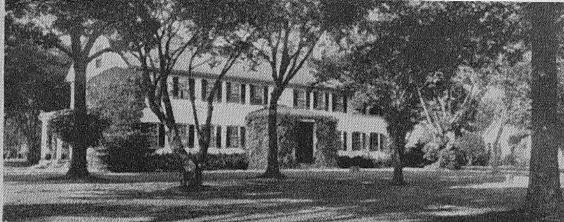
|
Rosegill in 1928, viewed from the river side. |
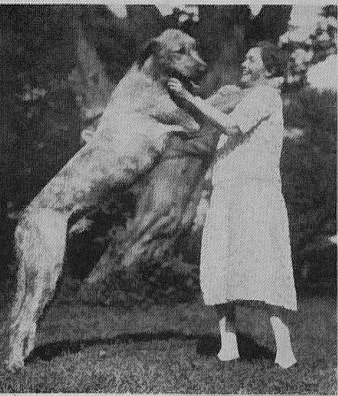
|
Cragwood Conrad. We're guessing this is Mrs. Smith ... These things he has brought with him from earliest times. These characteristics you will notice if you visit one of the big kennels promoting the breed in the United States. It certainly was one of the dominant features I noticed recently when I visited beautiful, historic Rosegill on the Rappahannock at Urbanna, Virginia, where Mr. and Mrs. Norwood B. Smith maintain the Cragwood Kennels of Irish wolfhounds. Cragwood has gained renown in this breed. Indeed, one of its hounds, Cragwood Darragh, was sent to England to help improve the strain at a famous kennel over there. This is one of the rare occasions upon which a dog of any breed has been sent from America to England, and it is the only time the United States has sent one of this breed to an English kennel. The Cragwood kennels have been located at Rosegill for barely four years, the Smiths starting to breed the dogs while living in California. They had gathered a nice lot of dogs on the Pacific Coast, so that when the time came to move eastward, a special car was chartered and it carried twelve of the big fellows, in charge of a kennelman, across the entire width of the United States. Rosegill is one of the oldest of Colonial estates, being patented in 1638[sic], at a time when the wolfhound still flourished in Ireland. It was old when Mount Vernon was conceived and generally is conceded to be the most beautifully situated of the Colonial estates in Virginia. There is probably no other 700-acre farm that has so many and varied natural attractions. |
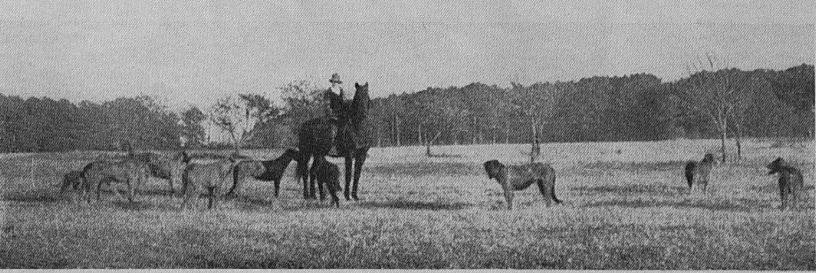
|
Mrs. Smith takes the dogs out for a run across fields There are few places so well adapted for the proper nurturing of the grand Irish wolfhound as the historic It is situated on a cliff overlooking the Rappahannock, which, at this point, is more than four miles wide and salt. To the west of the plantation is the beautiful Urbanna Creek, itself a navigable stream with steamers several times a week from Baltimore and Norfolk. Rosegill has more than five miles of shore line and a very famous Mill Pond where black bass abound. There are fourteen acres of private oyster shore adjoining the plantation, and crabs, clams and saltwater fish are plentiful. |
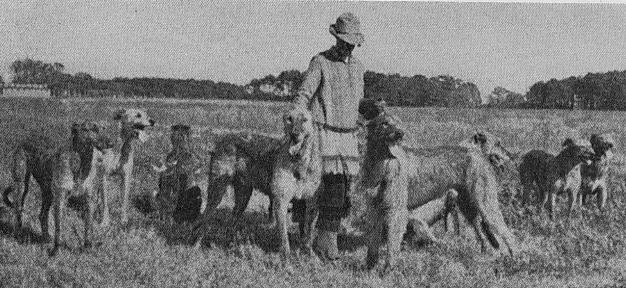
|
The most aristocratic and gentle dog Regardless of this scene, the Irish wolfhound is not a "pack" dog. He would much The original mansion apparently is in as good condition as when it was built, more than two hundred and fifty years ago. To the right of the main house stands the old kitchen with its immense "fire arch". To the left is the old laundry, which has been converted into the manager's cottage. If the stories connected with the old place are to be credited, the Cragwood Irish wolfhounds are not the first dogs of this breed that have roamed Rosegill's broad acres. One night in the dim past, when the great house was being made ready for a new owner, the man in charge of the work was sleeping on the floor of what was then the "small dining room". He was awakened by a noise or the feeling that some animal or person was near. Sitting up, what was his surprise to see two enormous dogs looking down on him through the window. One was black, the other white, and they stood with their front paws on the window sill. The man seized his gun and ran out of the house trying to overtake the giant hounds. He followed them until they suddenly disappeared in the middle of a field. One thing is certain, only the ghost of an Irish wolfhound could reach that window ledge from the ground. In any case, it is a harmless bit of folklore which the present owners are pleased to believe true... [Note the building at the far left of the photo. This is probably the hog house shown in the 1944 appraisal.] |
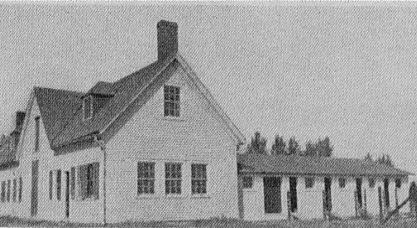
|
The Cragwood Kennel Buildings [Added to the river side of the summer kitchen and laundry.] |
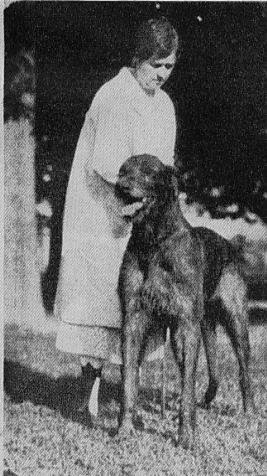
|
Cragwood Brigit Standing thirty-four inches at the Since taking up the Irish hound about nine years ago, Mrs. Smith has done very little showing, the reason being that she feared bringing distemper into the kennels. Until very recently there were but few Irish wolfhounds in America. If a good one was lost, it might be impossible to replace him at any price. Distemper goes hard with these huge babies as is natural with any dog that grows from a couple of pounds at birth to one hundred and five or to one hundred and seventeen pounds the day it is six months old. An Irish wolfhound at twelve months is only as far on the road to maturity as a small or medium sized breed at six months, in spite of the fact that he weighs one hundred and forty or fifty pounds. Yet these dogs seem quite in keeping with Rosegill, its acres, and its old buildings. The kennels themselves are most conveniently arranged. The kitchen is twenty feet square, well lighted and equipped with range and porcelain sink with ample drain boards. The supplies of dog foods and meals are kept in galvanized iron bins extending along one wall. The refrigerator is large enough to receive a whole beef, and it is so well constructed that it will keep a "critter" for a week at least, by which time it is consumed. Leaving the kitchen one enters a long hall with doors on either side. The first one to the left is the dogs' bathroom, which is fitted with a six-foot porcelain tub and piped with hot and cold water. This tub is raised about twelve inches from the floor so that bathing the dogs is not a back-breaking process. Across the hall is the straw-room where the supply for immediate use is always at hand, for the Mistress of Cragwood believes in dry kennels. Beyond, on either side, are the kennel rooms, eight by ten feet square. Each room has its separate run and two grown hounds occupy a room. These quarters are not heated except in cases of sickness. Collapsible, "knockdown" kennels are installed in the kennel rooms during the coldest weather. The outer doors are rarely closed and then only at night. At the end of the hall a door leads into a large exercising yard a couple of acres in extent. This yard is enclosed by a seven-foot fence as the Cragwood hounds can jump. It is really an inspiring sight to see seven or eight of these huge dogs sail over a five-foot fence with no apparent effort. Cragwood Delight thought nothing of six feet, and was always kept in a room opening on a specially-built run. The Cragwood youngsters, as soon as they can toddle, are given the run of the thirty-acre lawn surrounding the Mansion House. They spend their days romping under the trees or taking a dip in the river. They lead natural happy lives, not "kennel-dog" lives. They have much human contact, for besides the men and families who are emplyed on the farm, there is a constant coming and going of sightseers, for Rosegill is a sort of shrine, especially to Virginians. It was the home of two Colonial Governors, while from Rosegill went the first youth to be educated abroad, and so on, and so on. Mrs. Smith thinks Virginia, especially the Tidewater country, ideally suited to raising these Irish hounds. The climate is very like that of England and Ireland, cool summers and mild winters, the atmosphere at times being a little humid. ... |
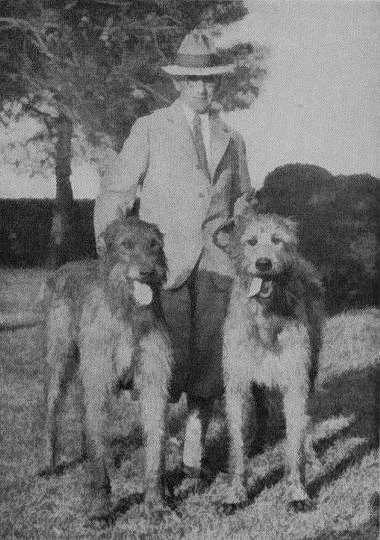
|
A pair of great wolfhounds Norwood B. Smith is holding the Westminster winner, ... There are many things that a person interested in dogs can find to love about the Irish Wolfhound. He may be big, but he is gentle to those he cares about and is lasting in his affections. And he has a supreme degree of dignity. Whatever the occasion, this big dog is ready to meet it with a calm and unconcerned exterior. It was this, perhaps, which first drew the attention of the owner of Rosegill. ... If this article seems to be rabidly in favor of the Irish Wolfhound, it may be credited to the real magnificence of the breed. Anyone who has had occasion to meet the big hound in his native atmosphere must become enamoured of him. And at Rosegill, that picturesque spot on the Rappahannock, Mr. and Mrs. Norwood B. Smith have contrived to give to the most aristocratic of canines the surroundings in which he revels. The combination thus produced is something that an enthusiastic dogman would go a thousand miles or more to witness. For the Cragwood wolf dogs of modern times have given to that estate something which can be found in few places of the world — a glimpse of the glories of centuries past. |
|
Many thanks to Bill and Karen Carr for the photographs shown below. Karen is descended from the Norwood Browning Smiths, and they have these items which they have inherited. They also own the portrait shown over the living room fireplace in the Edith Tunis Sale book. It is of 'Bates' and was painted in Hawaii, and that's the full extent of their knowledge of the painting. |

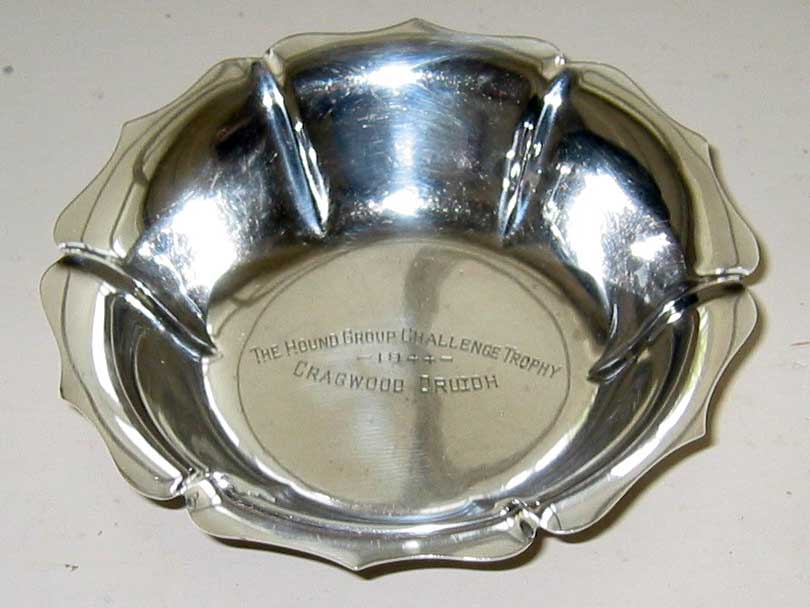
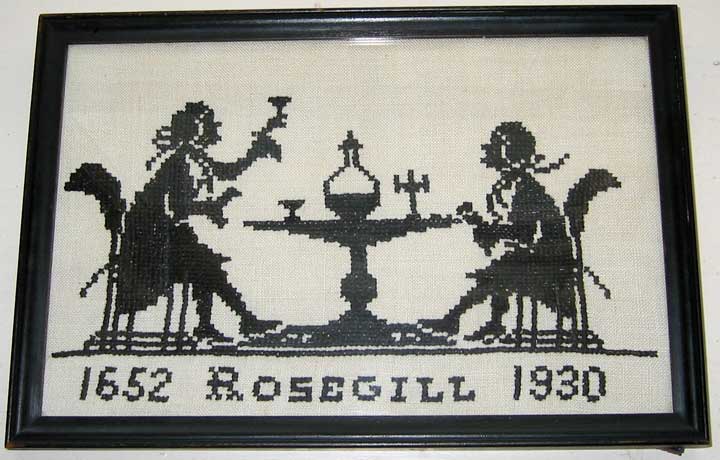
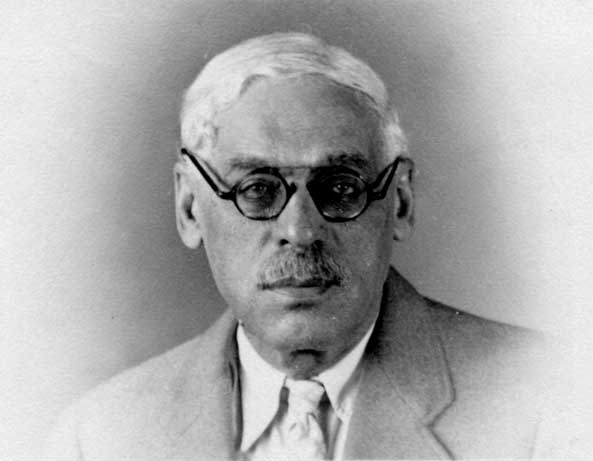
|
Norwood Browning Smith |
|
|